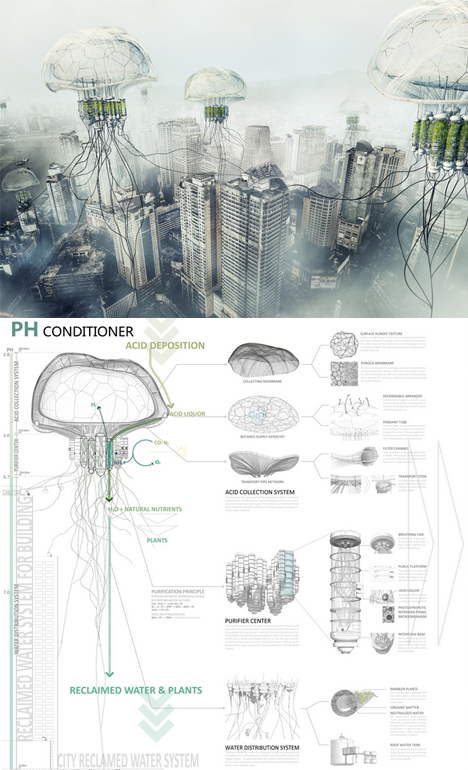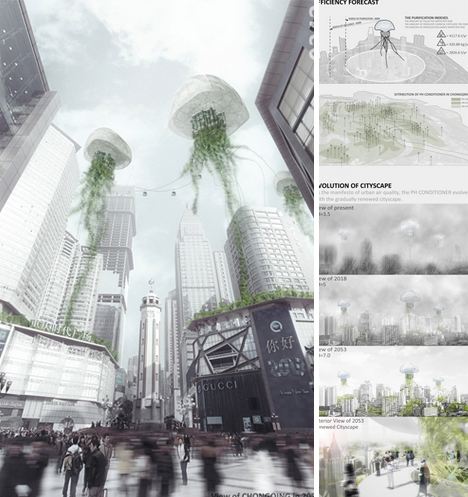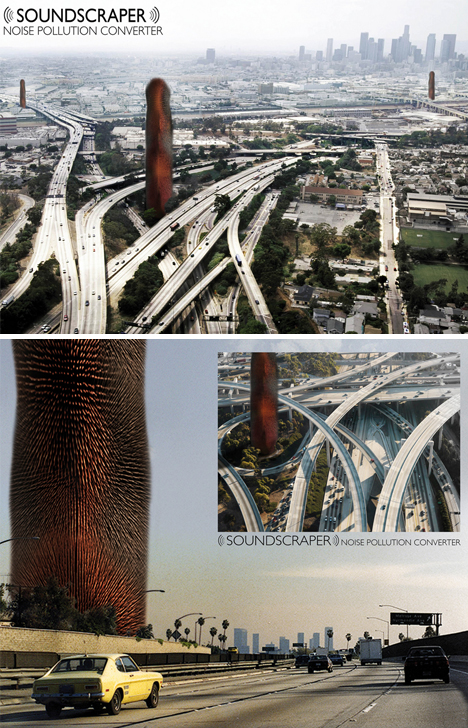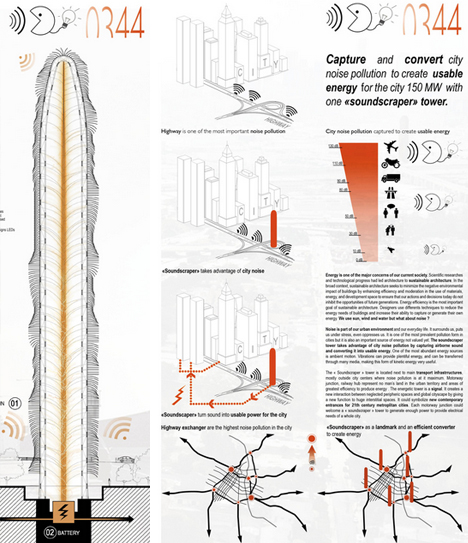From here, things could not possibly get stranger, or could they? Consider the PH Conditioner skyscraper from another group of far-thinking designers from China, where “The project aim to use a gentle way to manage Acid Deposition and eventually turn pollutants into available resources (reclaimed water & chemical fertilizer) for the region of Chongqing.”
This is done, naturally, via giant flying jellyfish structures that amble around and above buildings throughout a metro area. “The project is set to be 200-300m high where acidic pollutants gather. The aerocyst filled up with H2 at the top of the building provides buoyancy to it. The porous membrane attached to the air bags can absorb the acidic materials, like acid fog, collect and put them into core purifier where neutralization takes place with alkaline substance produced by nitrogen-fixing microorganism via biological action, which is stored in the purifier center.”
Shifting back to solid ground, and from air pollution to sound, a French team has proposed the Soundscraper, a building designed to absorb noise. The acoustic dampener also doubles as an energy producer, trapping and converting vibrations into power. This and other designs to follow warranted honorable mentions in this year’s contest.
More on on this works: “The skyscraper ‘s facade is evolutive, it vibrates depending on intentisity and direction of urban noises. As the skyscraper ‘s skin, the electro active lashes supported by a light metallic structure, form the exterior of the building, provides maximum exposure to city noise.” A specialized PFIG energy harvester convert sounds vibrations caused by surrounding noises to capture kinetic energy, after which an array of transducer ‘cells’ employing a novel actuation method are used to convert the mechanical energy into electricity. The electrical current is then transferred to a main storage compartment to be redistributed to the city.”



